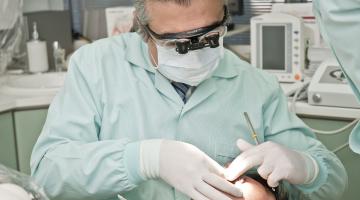3 Tips for Recognizing and Managing Common Menstrual Disorders
That first day you ever had a period, someone may have congratulated you on becoming a woman. As far as you were concerned, it was painful, inconvenient, and tremendously embarrassing. Few girls moving into womanhood are filled with joy.
For most, that attitude doesn’t change over the years. Even if you can reconcile menstruation with the price to pay for someday conceiving a child, it’s still something you would rather avoid. The only time you may feel happy about yours is if you’re regretting that unprotected sex you had.
For some women, periods are more than bothersome on their own. Millions suffer from one or more common menstrual disorders, which makes them even worse. If yours is a little out of whack or if you have other issues that seem to coincide with Aunt Flo’s visits, take note. You should know what’s going on and what you can do about it.
Here are three tips for recognizing some common menstrual disorders and options for dealing with any that affect you.
1. Use Birth Control to Treat Cramps and Abnormal Bleeding
You can take pain relievers like acetaminophen, ibuprofen, or naproxen to relieve painful cramping. But hormonal birth control may provide a better solution by lightning a heavy period and regulating your cycle.
Dysmenorrhea is the medical term for painful menstrual cramps. They’re caused by uterine muscle contractions, which occur more rapidly and more often with heavy blood flow. Oral birth control containing estrogen, like junel fe, could help lighten your flow and reduce your period pain.
Heavy flow, or menorrhagia, isn’t the only type of abnormal bleeding. If your periods are irregular, you may suffer from menorrhagia, and hormonal birth control may regulate your cycle. The same is true if you have infrequent periods, or oligomenorrhea. If you have no period, amenorrhea, birth control may reset your cycle and restart your periods.
You may think it’s OK if you don’t have periods or if they are infrequent. But a key function of your period is the cycle of shedding the uterine lining. Without that function, you are at greater risk of developing endometrial cancer.
In addition to hormonal oral birth control, progesterone injections like Depo-Provera may help you manage your cycle. And the Mirena IUD is often prescribed as a way to lighten seriously heavy bleeding. Birth control isn’t just for preventing pregnancy anymore.
2. Attack PCOS on Multiple Fronts
The cause of polycystic ovary syndrome is unknown. But a lot is known about other conditions that commonly occur with it. The best approach right now for managing PCOS is managing those conditions.
PCOS causes small, immature egg-bearing cysts to form around the ovaries. Those eggs aren’t released regularly. And that may interfere with the regular ovulation of the eggs in the ovaries, which affects fertility. PCOS is related to hormones, but its symptoms are moving targets. For example, the condition may cause very long periods. Or it may cause you to have hardly any periods at all.
Excess androgen production, inflammation, heredity, and insulin resistance are factors. Irregular periods, excess hair growth as well as baldness, acne, weight gain, diabetes, and heart disease are all signs of the condition. Treating these multidirectional issues is how PCOS is managed.
Again, hormonal birth control, specifically containing both estrogen and progestin, plays a role in decreasing androgen production and regulating periods. Lifestyle changes, such as increasing exercise, eating a healthy diet, and getting quality sleep, address insulin resistance, diabetes, and heart disease. Taking prescription medication such as spironolactone can help reduce facial hair growth and acne. And your doctor may prescribe medications to improve ovulation if you want to get pregnant.
With no definitive cause and no known cure, PCOS can only be managed by treating its symptoms. But doing so may help you avoid some of the symptoms, which can be a game-changer.
3. Eliminate the Estrogen Drop to Eliminate Menstrual Migraines
Millions of women suffer from migraines in the time beginning two days before their period starts and into the third day of bleeding. These aren’t your routine migraines. They are more severe, cause more light sensitivity, and last longer than those not associated with the menstrual cycle. Moreover, they tend to not respond to normal migraine treatment.
The rapid fall in estrogen that occurs right before your period begins is likely the cause of these massive migraines. When estrogen drops, so does your serotonin. Less serotonin leads to increased dilation of blood cells, which ushers in migraines.
This pathogenesis creates a strong correlation between migraines and hormonal birth control. With most formulas, you’re taking 21 days of hormones that increase estrogen levels to decrease the odds of conception. Those 21 days are followed by seven days of placebo which, of course, would drop the presence of estrogen like a hot potato.
Before you drop your oral birth control, you should know that you don’t have to take the placebos. Many women who want to avoid a period altogether skip the placebo days and open next month’s pack right away. Continuous dosage of hormones this way may also help you avoid the estrogen drop and thus, avoid the migraine.
Traditional migraine treatment may not work for menstrual migraines. Of course, there are some potential risks associated with hormonal birth control, so talk to your doctor before skipping the placebo. But if keeping your estrogen up keeps you from going down with a migraine, it might be worth the risk.
Take Control
If you suffer from a menstrual disorder, do what you can to not let it control your life. Take steps to manage the causes when you can and the symptoms when you can’t. You may not be able to send Aunt Flo packing, but you might make her leave some of her baggage on the doorstep.
More to Read:
Previous Posts:







